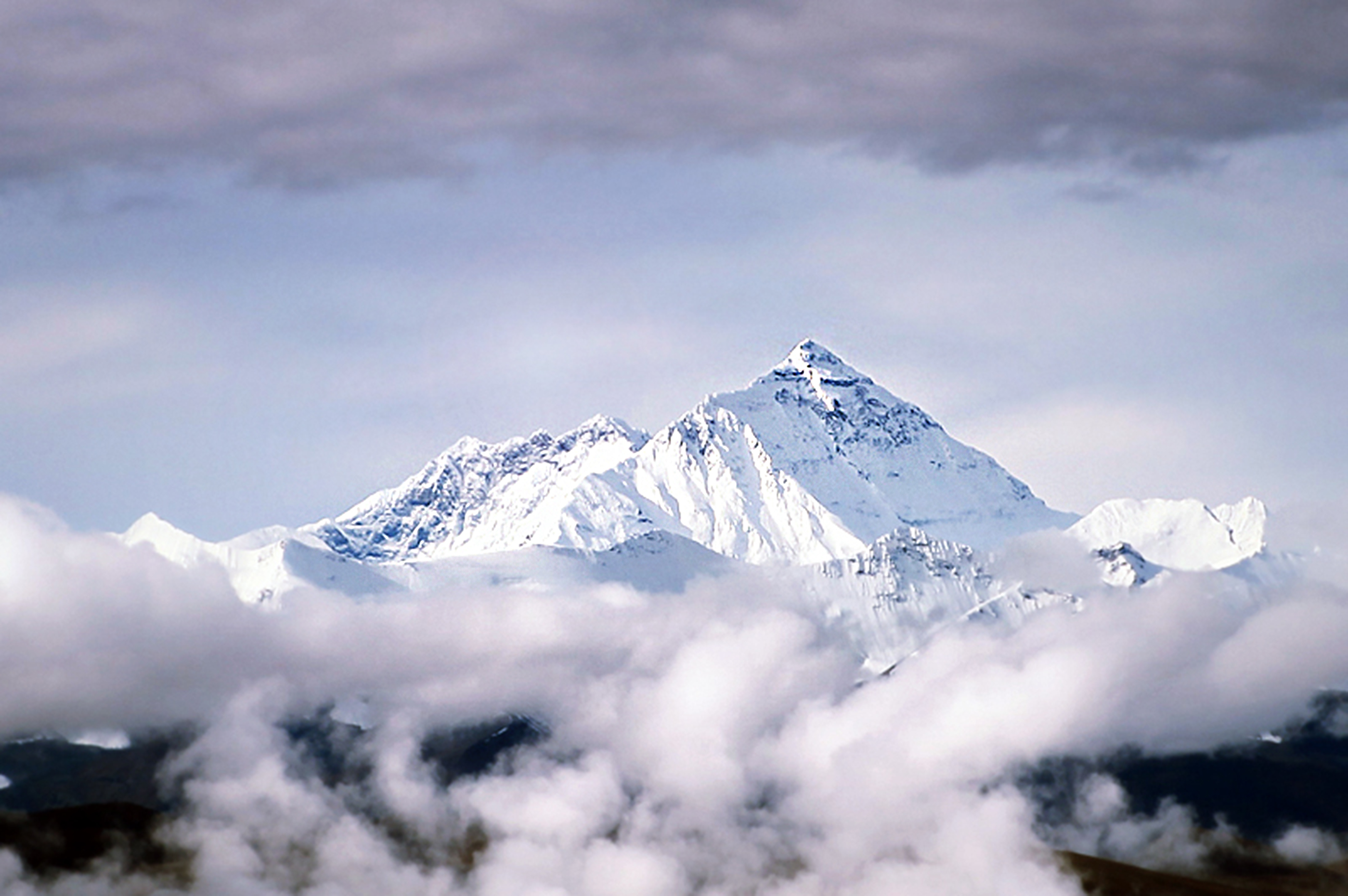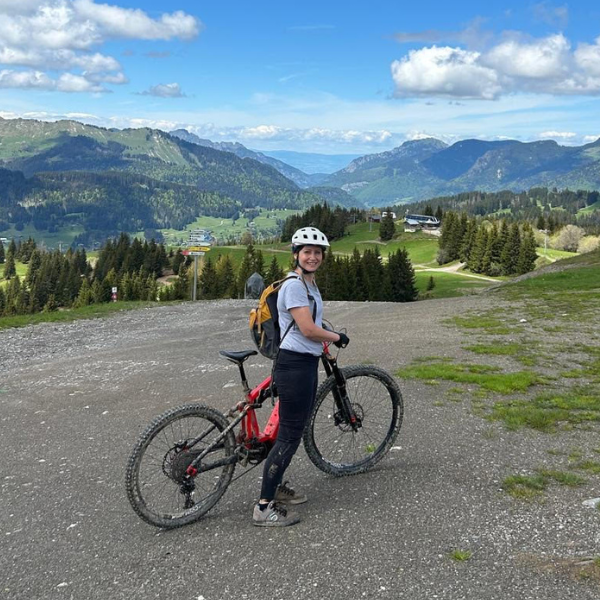Race from sea level: British Xenon gas climbers summit Everest in just five days, but now US national claims to have done it in less than four
It took the Army veterans just five days to get from London to the summit of the world's tallest mountain; but now Andrew Ushakov claims to have reached the top of the mountain even faster

Advnture senior staff writer Julia Clarke is currently trekking to Everest base camp, aiming to reach it on Everest Day on May 29 - you can follow her exploits here.
The race is on to see who can get from sea level to Everest's summit in the quickest time possible.
Earlier today (May 21), news broke that four former British special forces soldiers became the first climbers to scale Mount Everest using Xenon gas, which helped them go from sea level summit in an extraordinary five days.
It took the four veterans, in their forties and fifties, just five days from leaving London to reach the top of the 29,032ft (8,848m) peak, leaving them two days to get back to base camp to make their seven-day goal for the entire expedition.
Usually it takes mountaineers several weeks to acclimatize to the high altitudes. The previous record was 21 days, and most expeditions take 70 days to let climbers get used to the thin atmosphere.
But now, Nimral Purja is claiming that a client of his expedition company, Elite Exped, has gone from New York to Everest summit in just 3 days, 23 hours and 27 minutes. What's more, he's claiming that he did it only using supplementary oxygen.
According to Purja, on May 15, Andrew Ushakov, left New York at 10.15am to travel to Everest base camp. On May 16, he and a team of five sherpa guides started the climb and reached Camp 3 on May 17. On May 18 they departed Camp 4 and after 22 hours reached the summit on May 19 at 9.22am.
Purja said in an Instagram post: "Andrew only started climbing in 2020, he is not a full-time athlete, which makes this feat even more impressive."
All the latest inspiration, tips and guides to help you plan your next Advnture!
A full-time engineer and a dad, Ushakov reportedly managed the feat with "dedication, training and lots of preparation and hypoxic training for acclimatisation (*including 400+ hours in a hypoxic tent)".
A post shared by Elite Exped (@eliteexped)
A photo posted by on
Xenon on Everest
British veterans Alistair Carns, 45, Kevin Godlington, 49, Anthony Stazicker, 41, Garth Miller, 51, inhaled Xenon gas in Germany before their expedition. The gas is said to help accelerate the acclimatization process by increasing your body's erythropoietin production and boost red blood cell count.
They also slept in specially adapted hypoxic tents to simulate the rarified air found on Mount Everest in the run-up to the trip. On the mountain they used supplemental oxygen.
Anthony Stazicker is the founder of ThruDark a brand that creates high-performance outwear for harsh outdoor conditions. The group's progress was communicated on its Instagram account:
"First day (May 17) was 12 hours long yomp. Pretty punishing 6 hours from getting off the plane. Today (May 18) was 5hrs but another 1km in height gained.
"The Mission: Everest team is currently at Camp 3 and preparing to move to Camp 4 tomorrow (May 20). They’re making great time and morale is high, even dodging an avalanche as they moved through the Khumbu Icefall."
The team summited on May 21 at 7.10am in 35mph winds. They were with a team of fiver sherpa and one photographer.
A post shared by ThruDark® (@thrudark)
A photo posted by on
Xenon gas has been used by guides before but this is the first time it has been used by regular climbers.
Lukas Furtenbach of Austria-based Furtenbach Adventures, which organized the expedition told Reuters: "“Xenon improves the acclimatization and protects the body from altitude sickness and the effects from the hypoxic environment.
"Xenon made the climb safer and shorter as it kept the climbers properly acclimatized," he said. “Shorter expedition also means less garbage, less resources, less human waste in this sensitive environment."
Xenon is a gas mainly used in manufacturing of lights, but also as a surgical anesthetic. It is recognized as a doping agent in competitive sport by the World Anti-Doping Agency (WADA) and in May 2014 was added to the Prohibited List of substances.
Adrian Ballinger, American climber and guide from Alpenglow Expeditions company, told Reuters that the use of Xenon was a “stunt ... it’s never seemed like the type of experience we want to provide.”
However, he admitted that “everyone should climb the mountain in a form they are proud of. If these climbers are proud of this style, then that’s their choice”.
The British group are hoping to raise over £1 million ($1,341,000) for veterans charities.
A post shared by Ashleigh Mathieson (@x60ash)
A photo posted by on
Social media comments on the Elite Exped's posts were not so congratulatory, however:
Matteusstarling commented: "Speed means nothing, that’s just EGO. No respect for setting a dangerous example for climbers. There is a method to keep people alive and healthy and that’s just cutting corners to make headlines. Internet and social media help bring these kind of sadly bad examples to life. But in the mountains, life will be always priority. Congratulations to the courageous climb, but it’s not an example, it’s merely a exemption of someone risking it’s [sic] life and fellow sherpas."
Hornsby_type_r replied: "These “records” are mostly a product of artificially cutting corners most others don’t when climbing mountains. Hypoxic tent before, ~5 Sherpas supporting you and probably a very high oxygen flow rate making the actual altitude relatively irrelevant. Still very hard, but with a lot more aid than most people get when climbing the mountain."
Lanzetta posted: "Well if we’re talking about Sea to Summit I’d say Tim Macartney Snape did it correctly. Walked from the beach to the summit of Everest. If you go by plane it’s not sea to summit, it’s just a quick ascent of Everest."
British MP Alistair Carns told The Sun the xenon team were treating the climb like a Special Ops mission – using every advantage they could get.
He said: “This is like a Special Forces mission. We have the best people, the best training, the best kit and we are at the very cutting edge of science. We’ll go in, hit the objective and leave no trace, no waste.”
"Nursing gave me the qualities to scale Everest"
Elsewhere at Everest base camp, a UK nurse, fresh from her summit, has revealed how it was her nursing profession that gave her the skills she needed to reach the world's highest peak.
Rowena Rowberry, 34, who is a nurse and lecturer in nursing at the University of Derby, is mid-way through her challenge of scaling each of the seven highest summits in the seven continents. Mount Everest was her fourth summit.
She's taking on the challenge to raise money for the Royal College of Nursing Foundation and to shine a light on the hardships of nursing. Rowberry told the BBC:
"I feel battered and bruised, mentally and physically exhausted. I really did struggle on the way down and if it wasn't for my amazing sherpas who kept encouraging me... they were the real machine into making this happen.
"There's so much I've been through and I don't think I would have been able to do this if I hadn't had some of the qualities nursing has given me.
"I wanted to shine a light on the profession and show what we can do."
A post shared by Rowena Rowberry (@rowenajayne21)
A photo posted by on
- The best winter hiking boots: for unbeatable performance in the cold
- The best ice axes: for tackling frozen terrain

Charlie is a freelance writer and editor with a passion for hiking, biking, wild swimming and active travel. She recently moved from Bristol to South Wales and now refuses to leave her front door without one of the following: lightweight hikers, wetsuit, mountain bike, tent. Having bought a fixer-upper home that backs on to protected woodland, her love of nature and wildlife has intensified and the dark skies have kickstarted a new fondness for stargazing.
